Brief

At a Glance
- In 2022, the Chinese luxury market declined 10% year over year, ending a five-year run of exponential growth. Covid-19-related business disruptions caused the downturn.
- Despite the setback, the fundamentals for luxury consumption remain strong and growth is expected to resume in 2023.
The China luxury market had been on a bull run over the past five years, with the market doubling between 2019 and 2021. That growth streak ended in 2022, brought to a halt by zero-Covid policies. Strict lockdowns remained in place through December, slowing economic and social activities and causing a significant number of stores to sit idle.
As a result, the personal luxury market contracted 10% YOY (see Figure 1). In 2022, nearly every luxury category and most brands experienced their first major decline in five years.
In 2022, the Chinese luxury market declined 10%, ending a five-year growth spurt
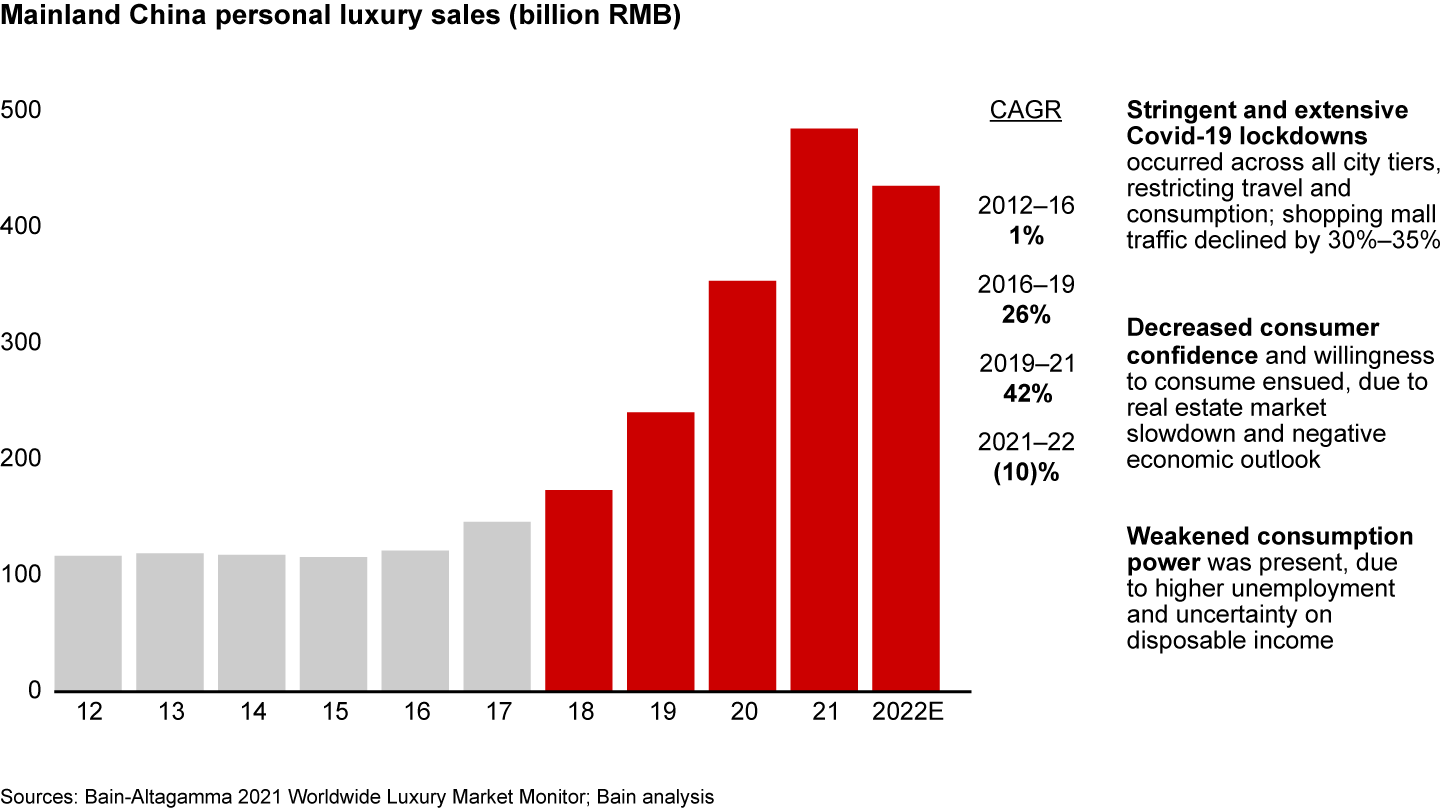
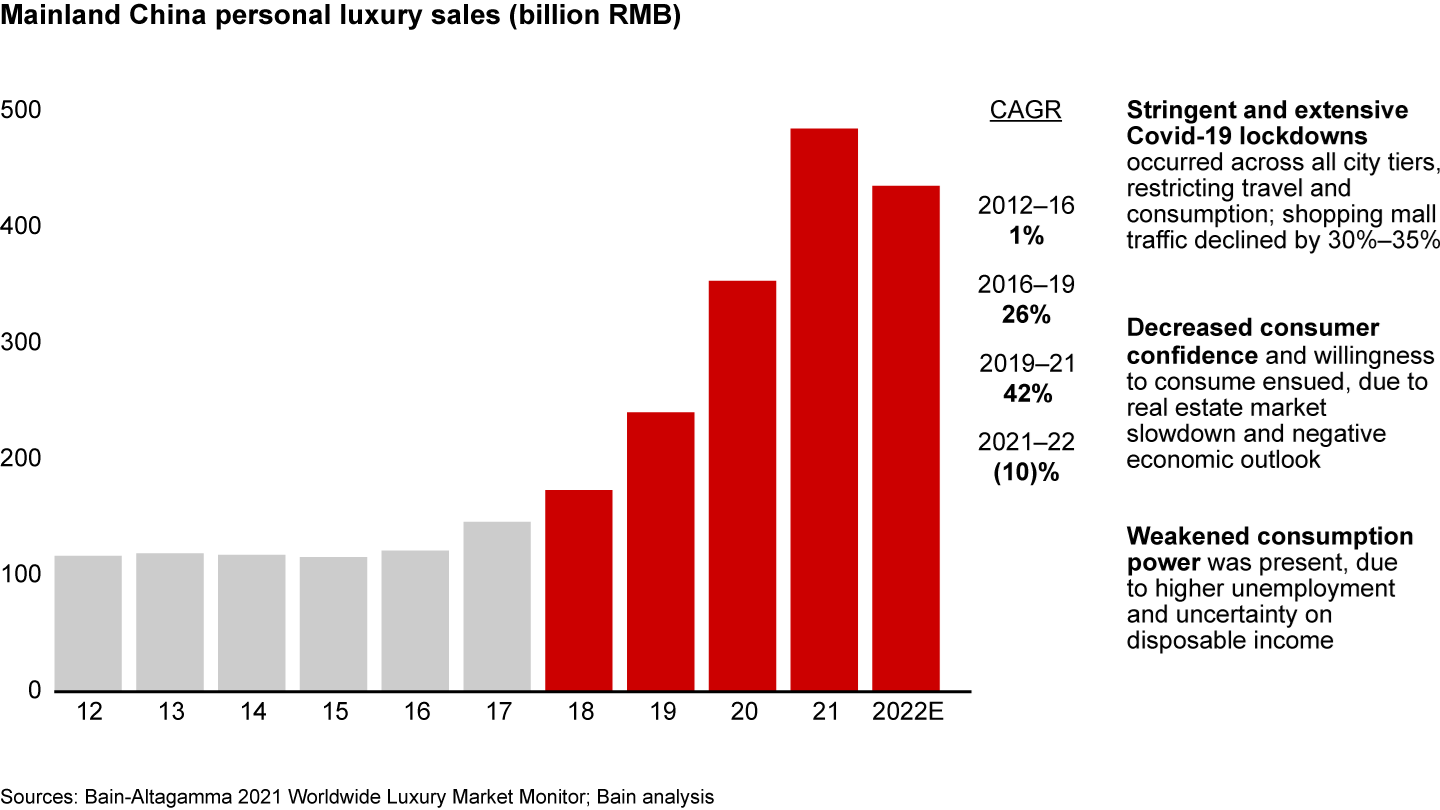
Since borders were still closed at the start of 2022, Chinese customers made most of their luxury purchases within the mainland. Despite a strong start to the year, Covid-related lockdowns started in the second quarter and created barriers to purchasing. Major cities were shut down, sometimes suddenly, which prevented in-person shopping.
A decline in the real estate market, higher unemployment, and anxiety about Covid also weakened consumer sentiment. Many consumers opted to stay home, even after movement restrictions relaxed. Luxury brand leaders told us shopping mall traffic was down 30%–35%.
Luxury sales did not decline as steeply as foot traffic because conversion rates increased significantly. Consumers completed very targeted and short shopping trips instead of casually browsing stores as they had in the past.
All luxury categories were affected by the decline, although not to the same degree (see Figure 2). Categories with strong online penetration were less affected by lockdowns and fared better. For example, with 50% online penetration, luxury beauty only contracted 6%.
Online penetration was lower in other segments (10%–15%), so they were more exposed during lockdowns. The watch market suffered the most, declining 20%–25% from 2021. Fashion and lifestyle categories experienced a 15%–20% decline. Jewelry and leather goods performed slightly better, with a 10%–15% decline.
The impact across nonbeauty categories was consistent with historical trends. Typically, jewelry and leather post the strongest performances, fashion falls in the middle, and watches are the weakest.
All luxury categories declined in 2022, but watches suffered the most
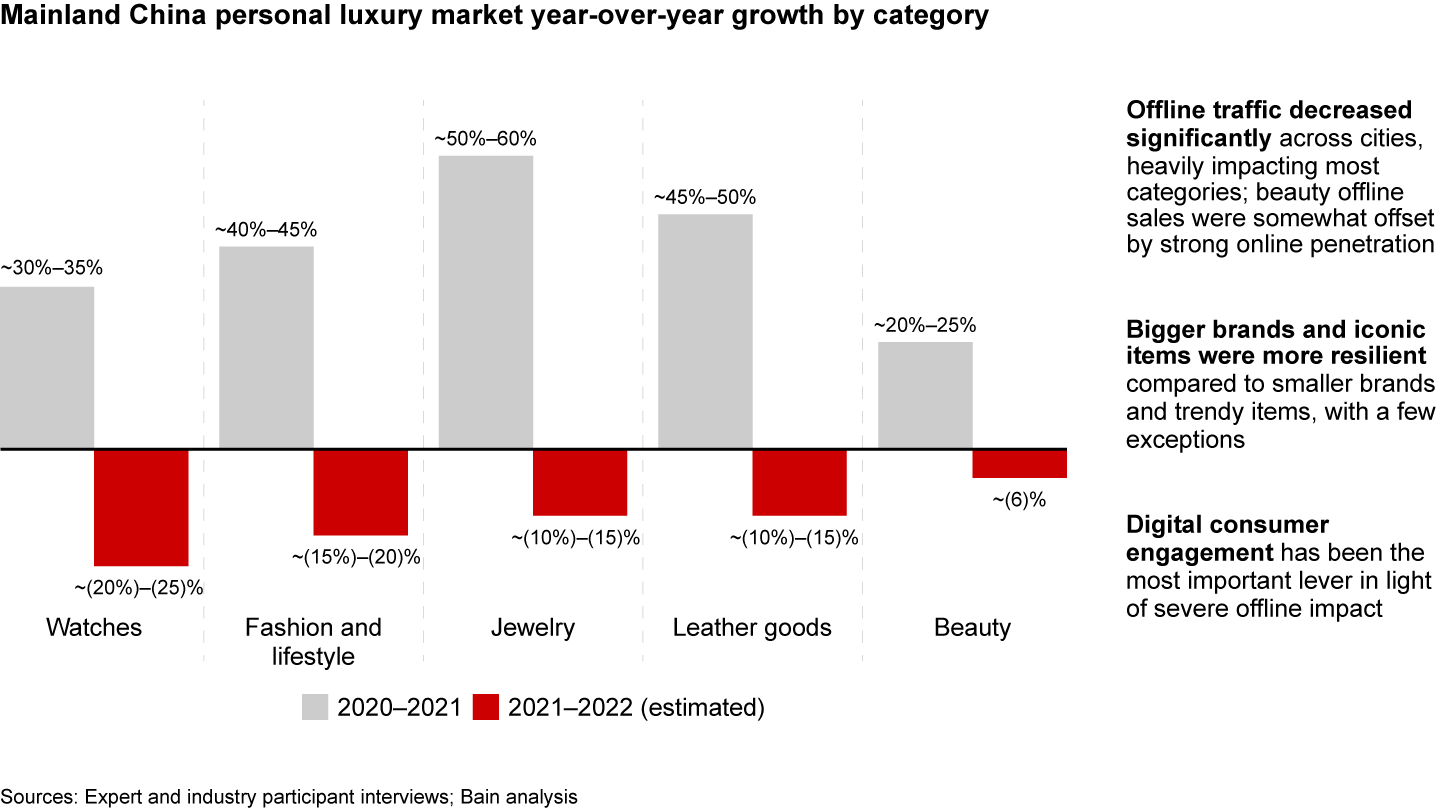
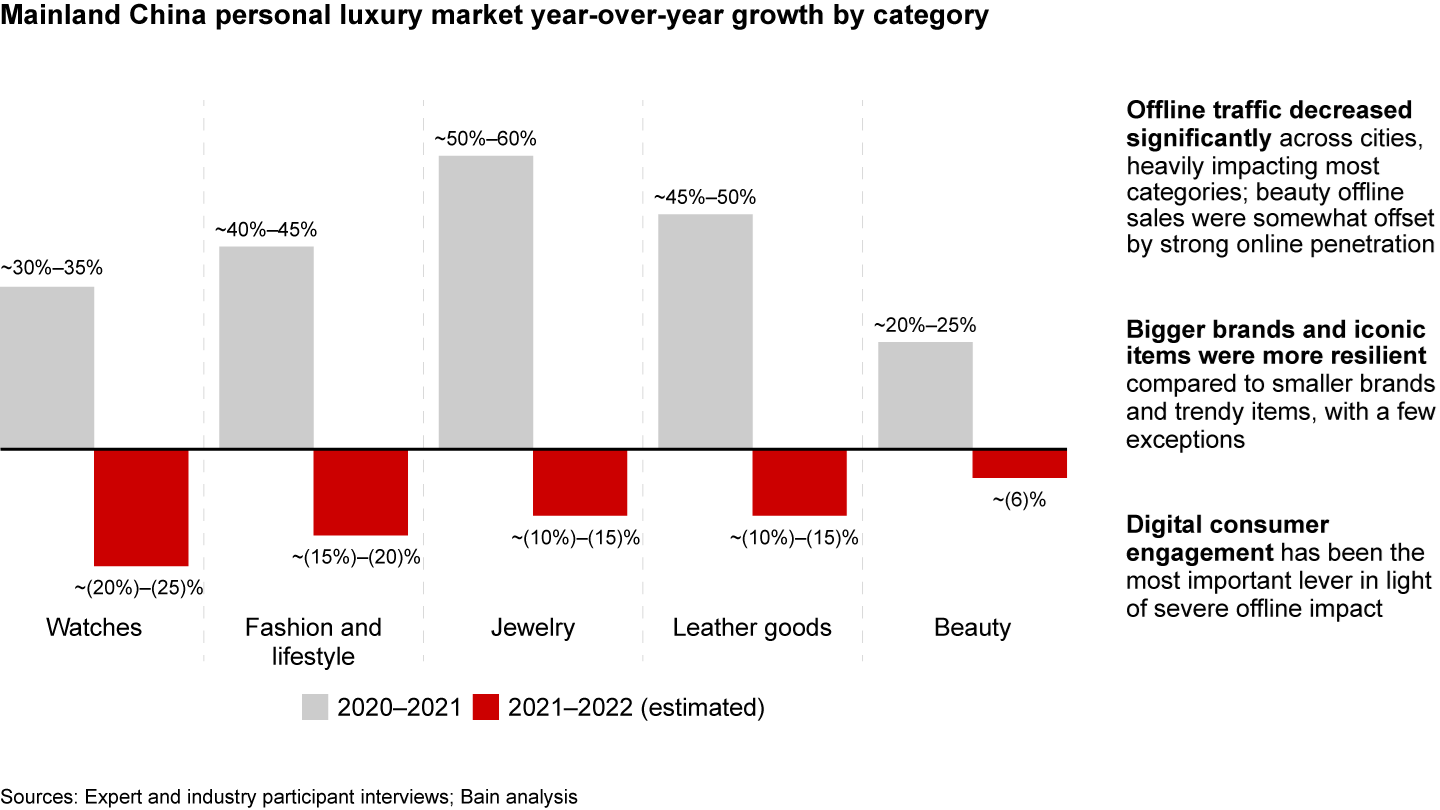
While most brands saw declines in 2022, a few stayed flat or grew despite these challenging conditions. Three factors contributed to their success:
- On average, bigger brands out-performed smaller players.
- Brands with iconic portfolios did better than those with trendy or seasonal merchandise.
- Brands with a higher concentration of Very Important Clients (VICs) also fared better.
This year, our research explores three major trends and how they could influence the luxury market’s comeback. They are the expansion of VICs, duty-free shopping, and global pricing strategies.
Trend 1: The expansion of VICs
Globally, the top 2% of customers account for about 40% of luxury sales, according to Bain’s most-recent luxury goods market study. China’s luxury market typically attracts a high concentration of VICs—and that trend expanded in 2022 (see Figure 3).
The concentration of very important clients (VICs) in China grew in 2022
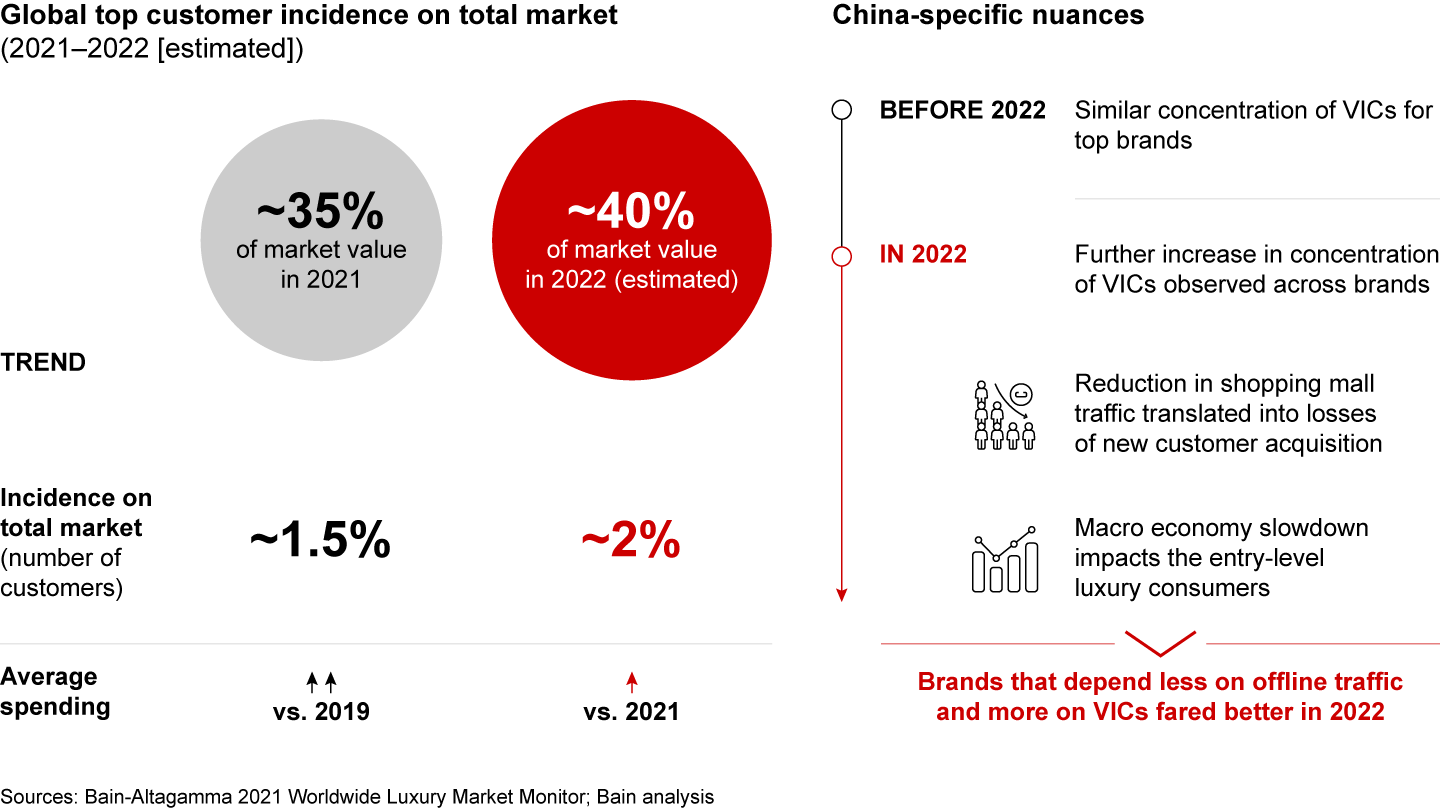
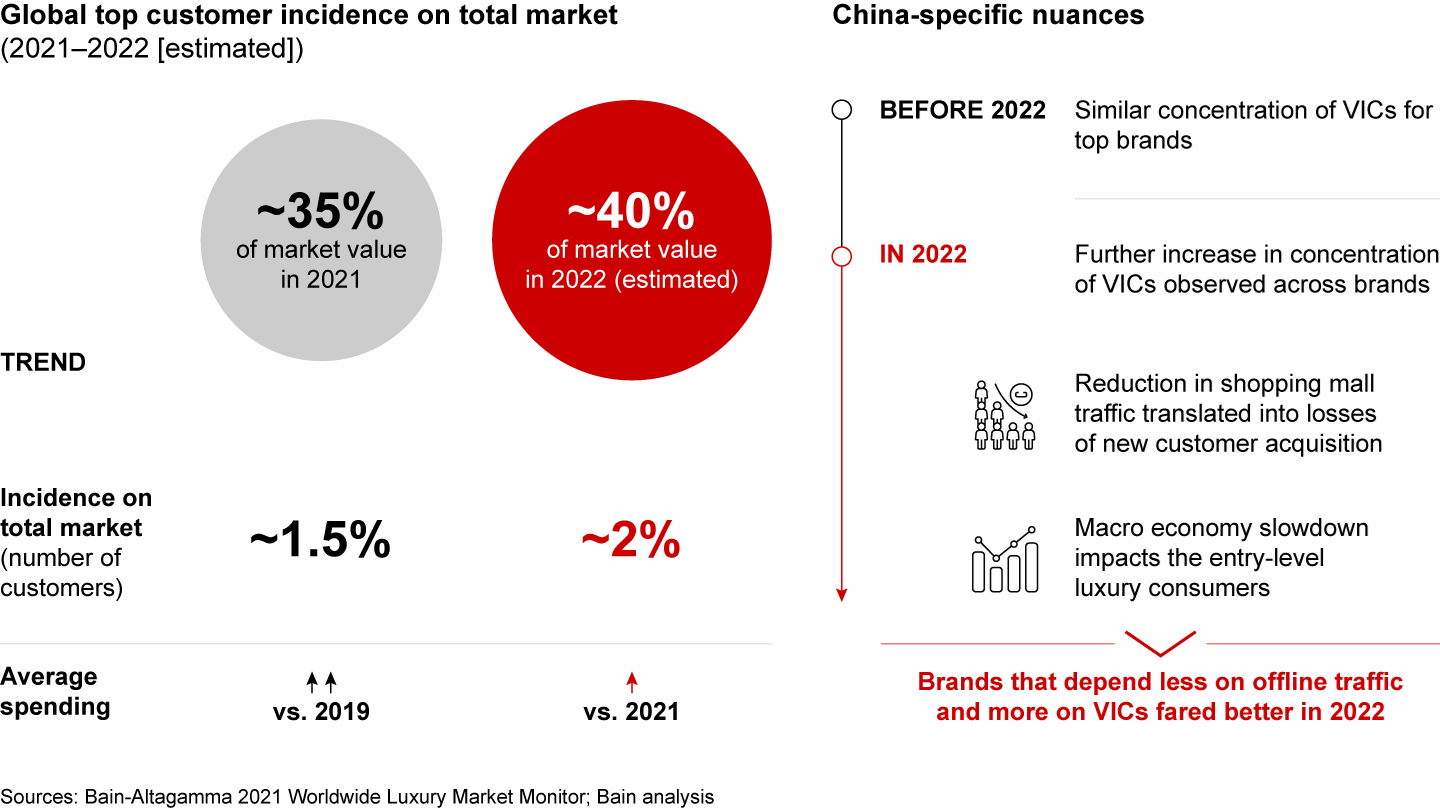
The economic slowdown affected entry-level luxury consumers more than high-net-worth individuals (HNWIs). The decline in mall traffic also translated into fewer new customers entering luxury stores. As a result, sales skewed toward VICs in 2022. Some Chinese luxury brands achieved higher concentrations of VIC sales than the global average.
VICs played an important role in online luxury sales, too. Shoppers who buy more than three times a year account for over 50% of sales and are the fastest-growing segment, according to leaders at Tmall Luxury Pavilion.
Trend 2: The duty-free ecosystem
In recent years, duty-free shopping in Hainan contributed to China’s luxury market boom. However, Hainan province was also affected by Covid policies, travel restrictions, and lockdowns in 2022.
Duty-free sales could be down 30%, landing around RMB 35B in 2022 (see Figure 4). That was far below the Hainan Development and Reform Commission’s target of RMB 100B. The decline was slightly offset by an 8% increase in spending per shopper.
Duty-free sales in Hainan dropped approximately 30% in 2022
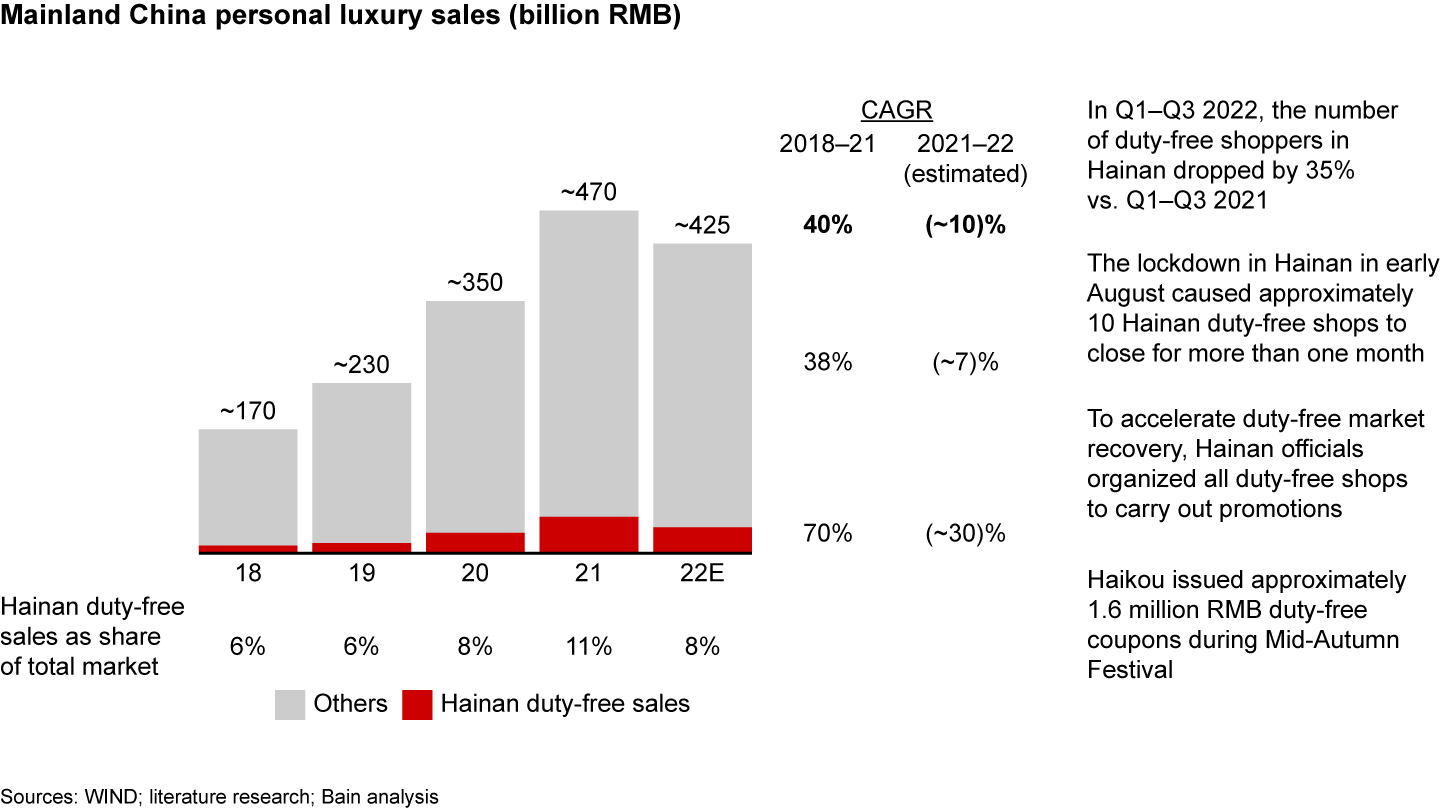
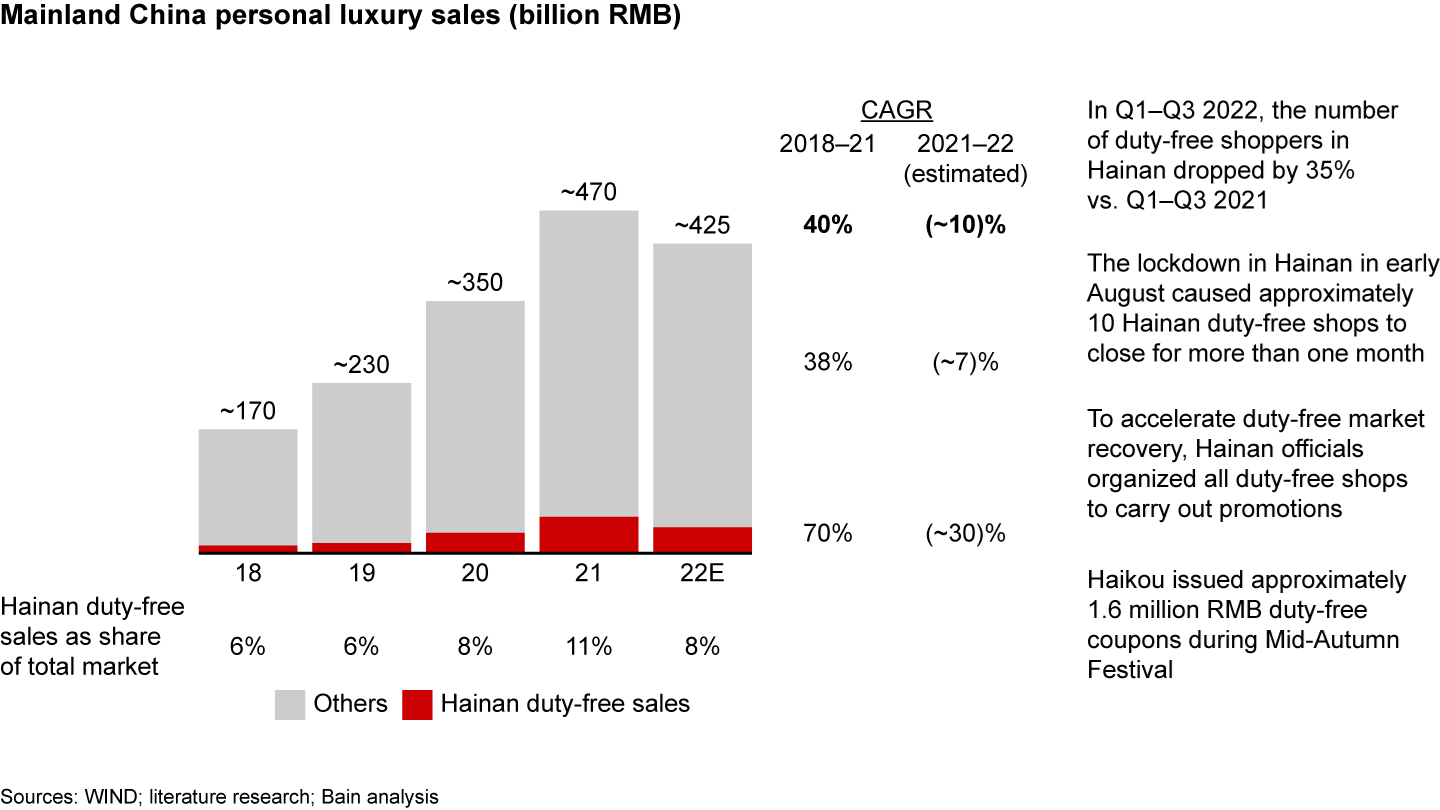
The decline in sales is directly linked to a reduction in traffic. Hainan had about 35% fewer duty-free shoppers in 2022. Strong promotions and an International Consumption Expo were held in the third quarter to reinvigorate travel and purchasing. However, they were followed by more lockdowns.
Despite the lackluster results, the central government is committed to strongly promote Hainan and the repatriation agenda. Brands, retailers, and developers continue to follow through on their committed investments in the province.
Meanwhile, China Duty Free Group (CDFG) and its affiliates have been aggressively pushing for domestic e-commerce options to offset declines caused by limited airline travel. Duty-paid items accounted for roughly 40% of CDFG’s revenue during the first half of 2022 (see Figure 5).
Domestic, duty-paid e-commerce offered by travel retailers became a key shopping channel during Covid-19
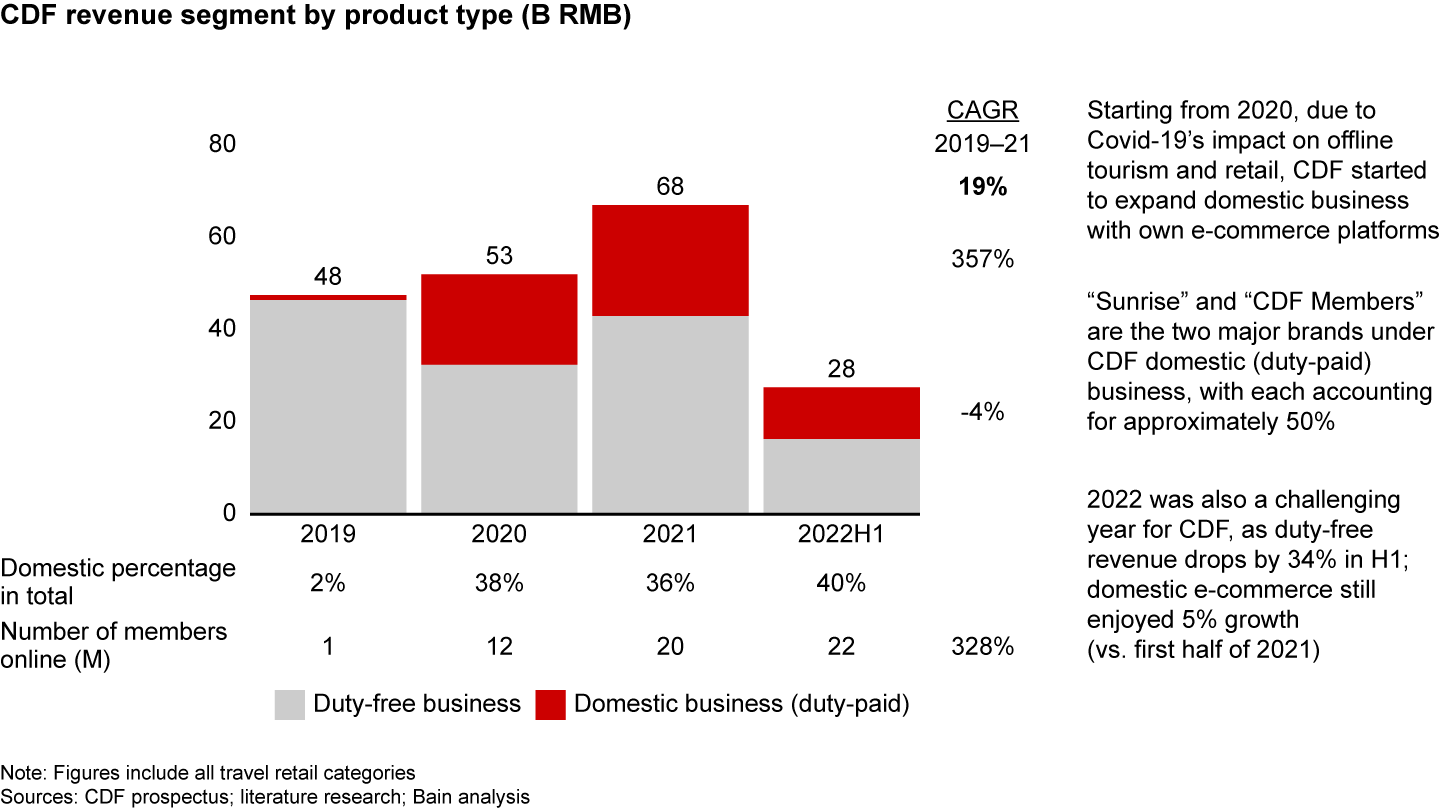
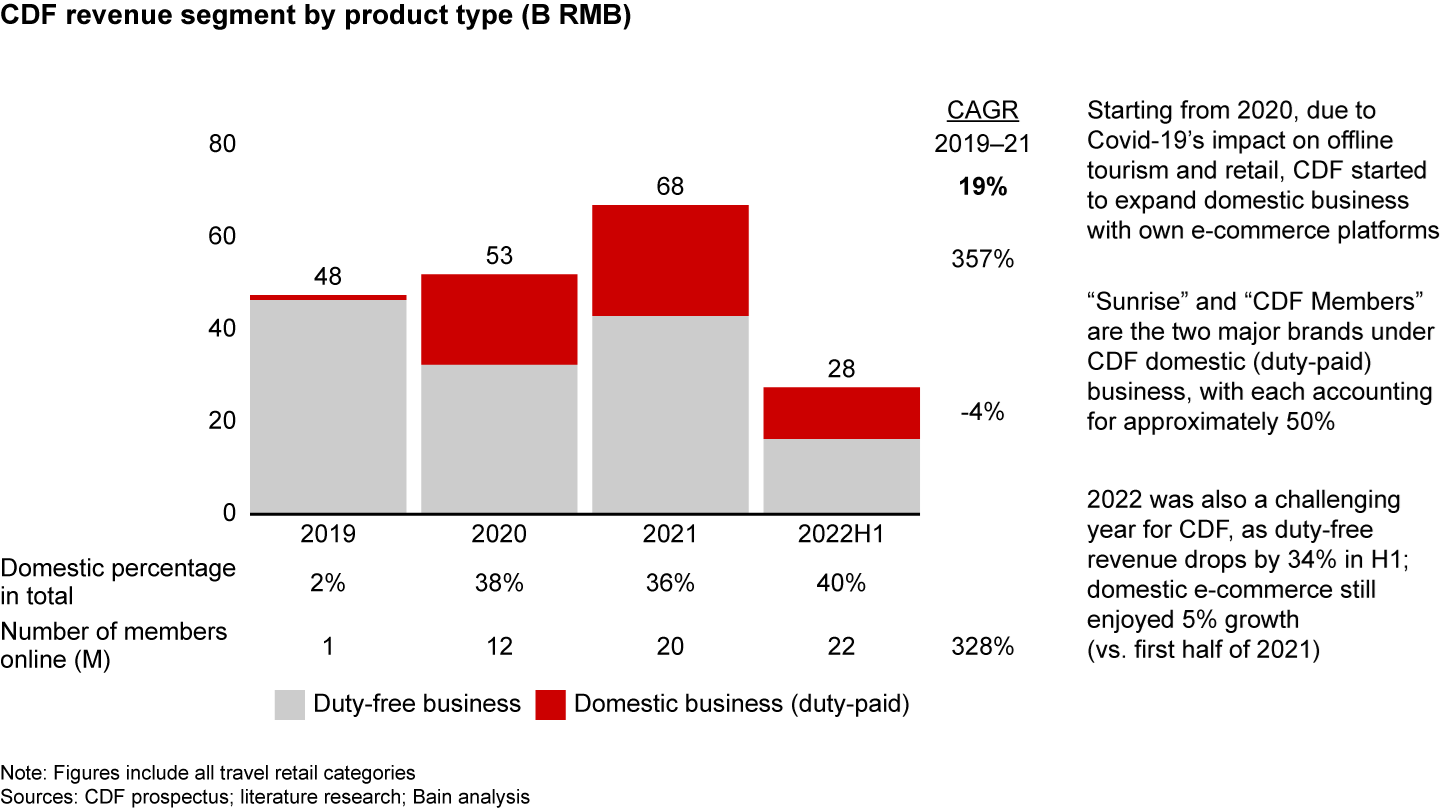
Growth in discounted duty-paid business makes it harder for luxury brands to harmonize pricing across channels. In mid-December 2022, the price gap between domestic and duty-paid beauty prices was 60%–70% for some leading brands. In the short to mid term, this trend could devalue luxury beauty brands.
South Korea’s duty-free market continues to play an important role in the broader luxury beauty ecosystem. Travel has been lower over the past two years, yet duty-free sales are high. In 2022, visits to South Korea were over 90% lower than in 2019, but sales remained at ~70% of 2019 levels (see Figure 6). This suggests an abundance of cross-border exporting activities, such as daigou shopping.
Travel to South Korea contracted 90%, yet duty-free sales remained stable
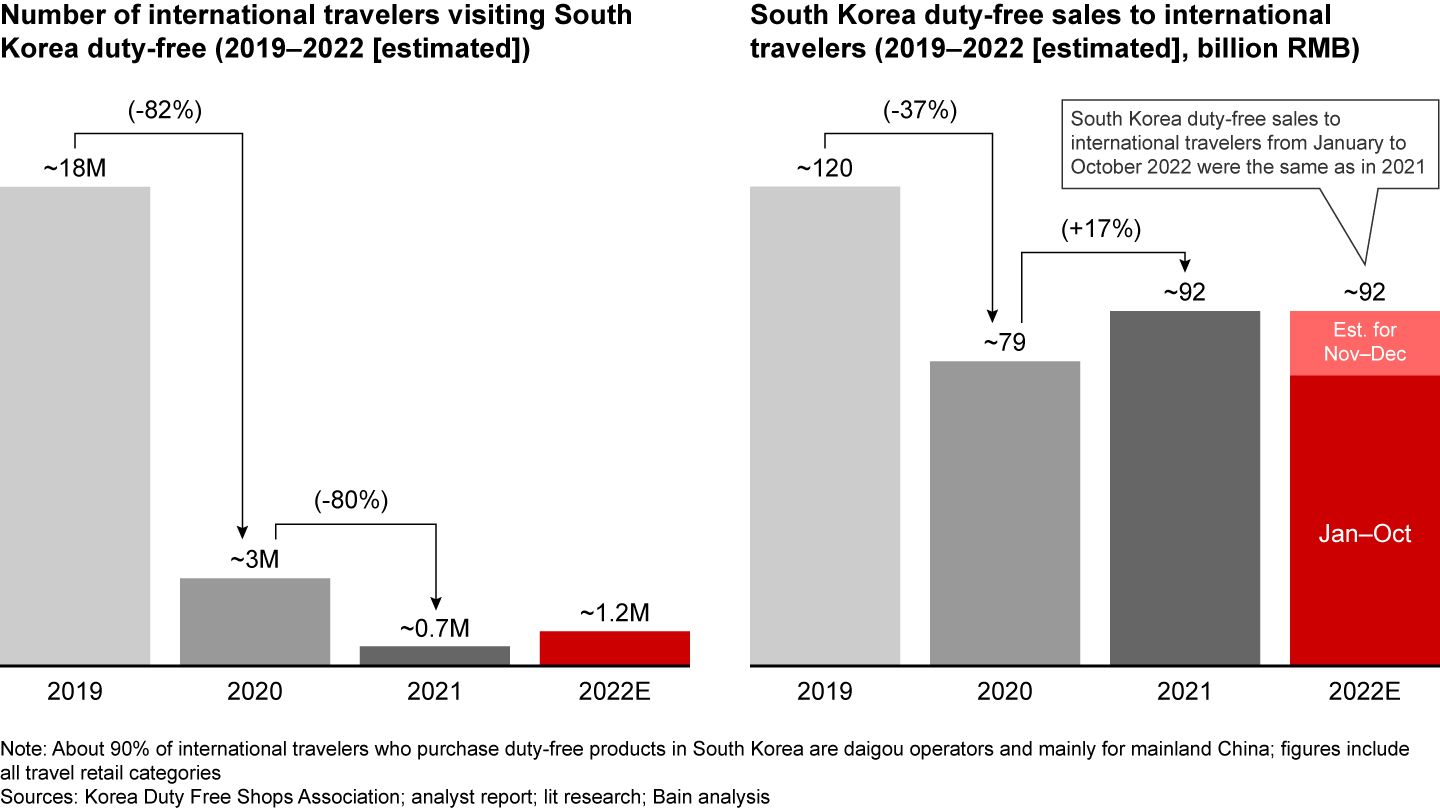
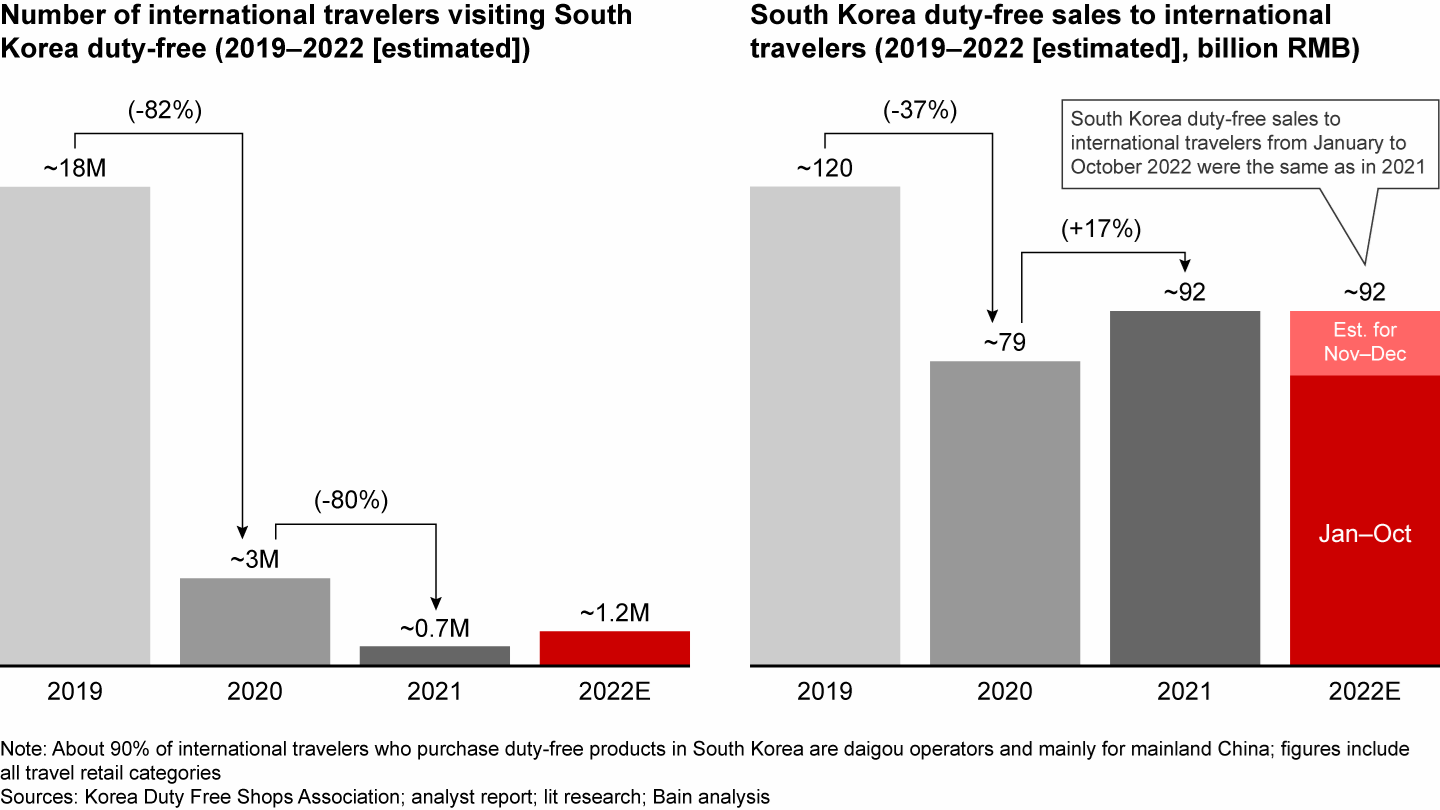
Trend 3: Global pricing strategies
Chinese borders have been closed since 2020, so most brands have not needed to harmonize pricing between China and the rest of the world. Similar to pre-pandemic times, some luxury prices are now observed to have significant price gaps between China and Europe. Only a few brands maintained global pricing strategies over the past two years.
A sample check of leading SKUs in the leather segment found a price gap of 25%–45% between China and Europe—before accounting for value-added tax (10%–12%). The price gap was larger for entry-level products than for more expensive merchandise.
The price gap for shoes was significant (25%–35%), while jewelry and watches were less affected (see Figure 7). Many brands in those categories adopted global pricing strategies years ago and maintained their strategies despite borders being closed.
Pricing gaps make purchasing abroad attractive to Chinese consumers, once international travel resumes
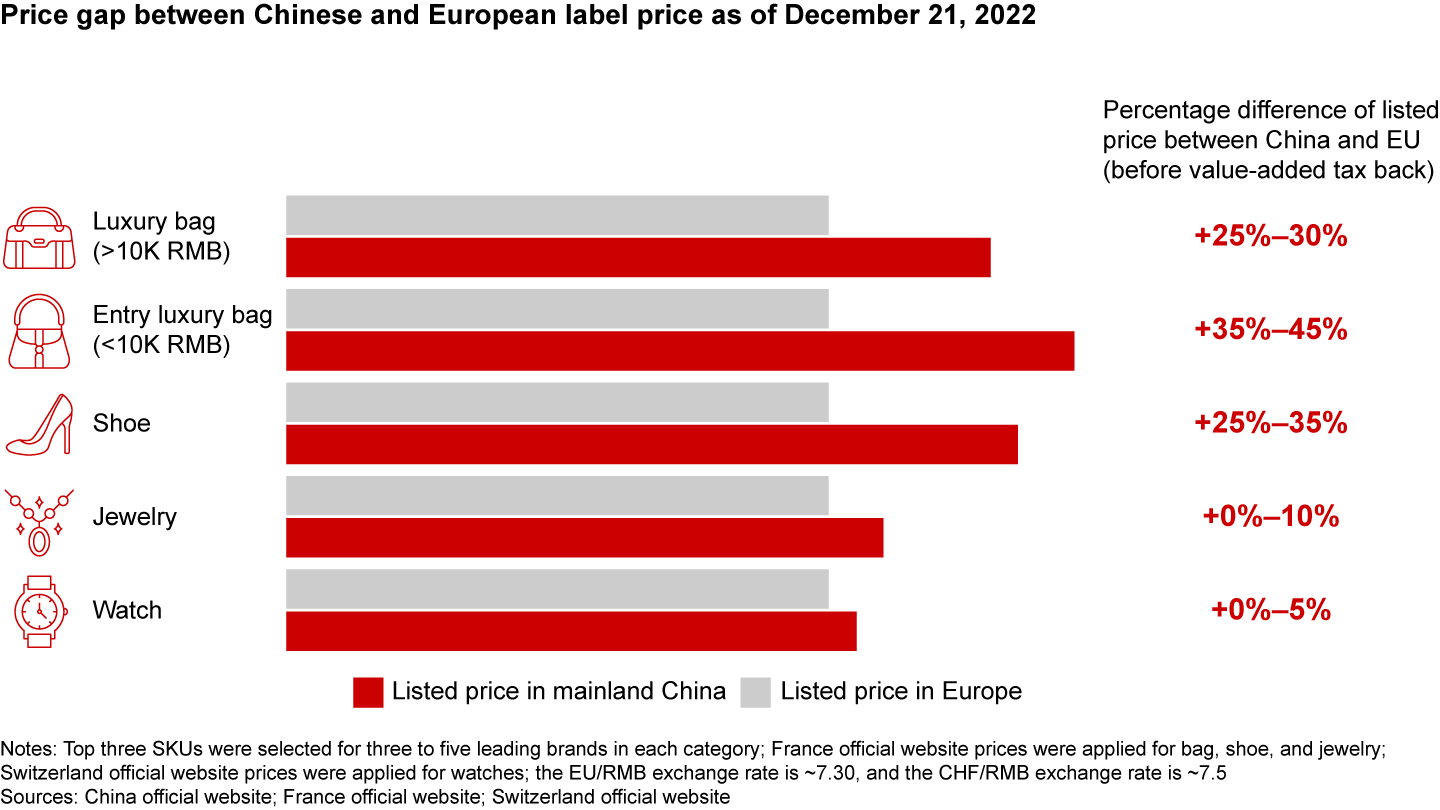
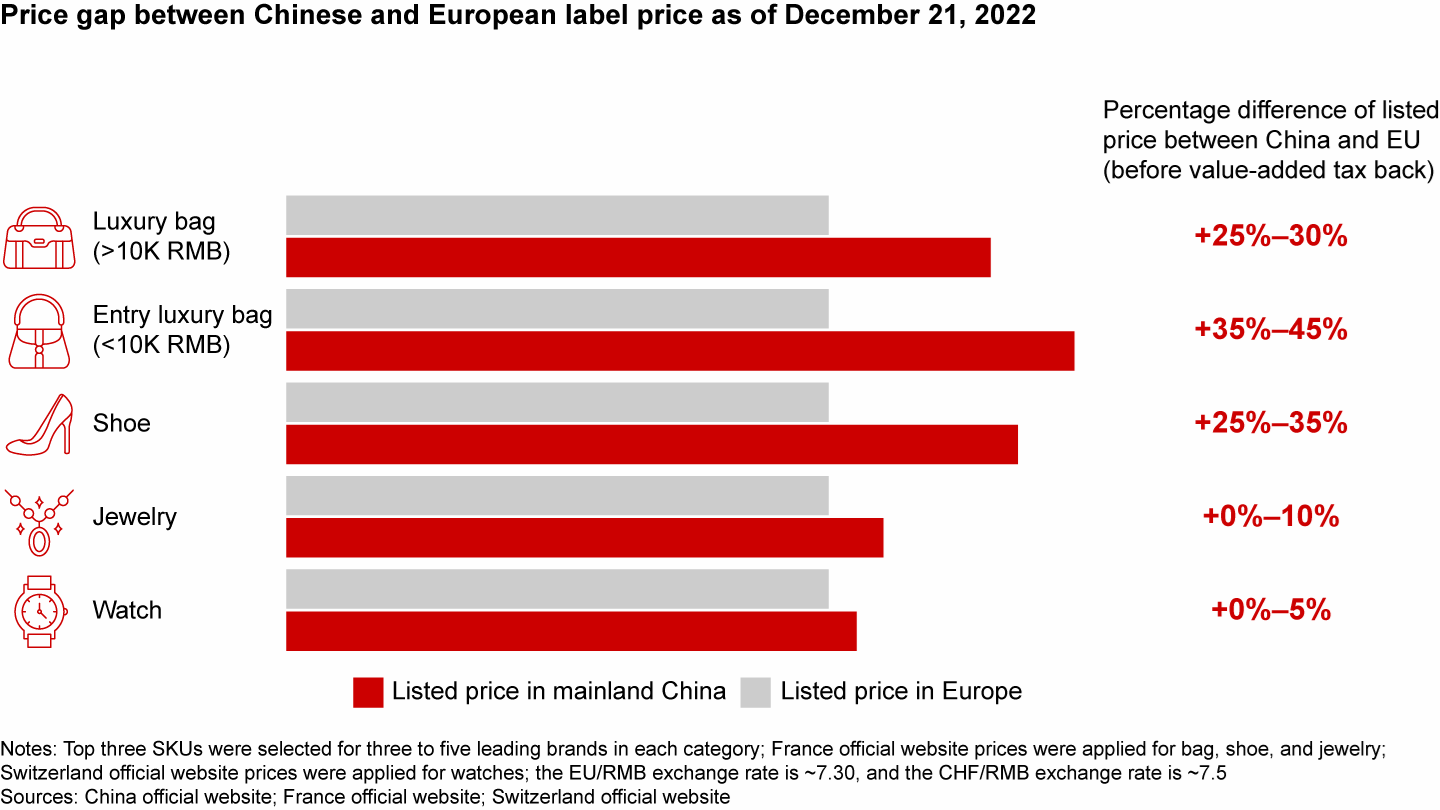
A look ahead
We believe 2022 was a reset, not a harbinger of more distress. Growth will resume in 2023 after China recovers from the most-recent Covid-19 impacts. We expect positive conditions to return before the end of the first quarter.
The fundamentals of consumption in China are still intact. Compared to other emerging markets, China is a behemoth for luxury growth. It has a larger number of middle- and high-income consumers, and those populations are projected to double by 2030 (see Figure 8). In the mid to long term, “the next China” is China.
Despite setbacks in 2022, China is still the most promising market for luxury goods
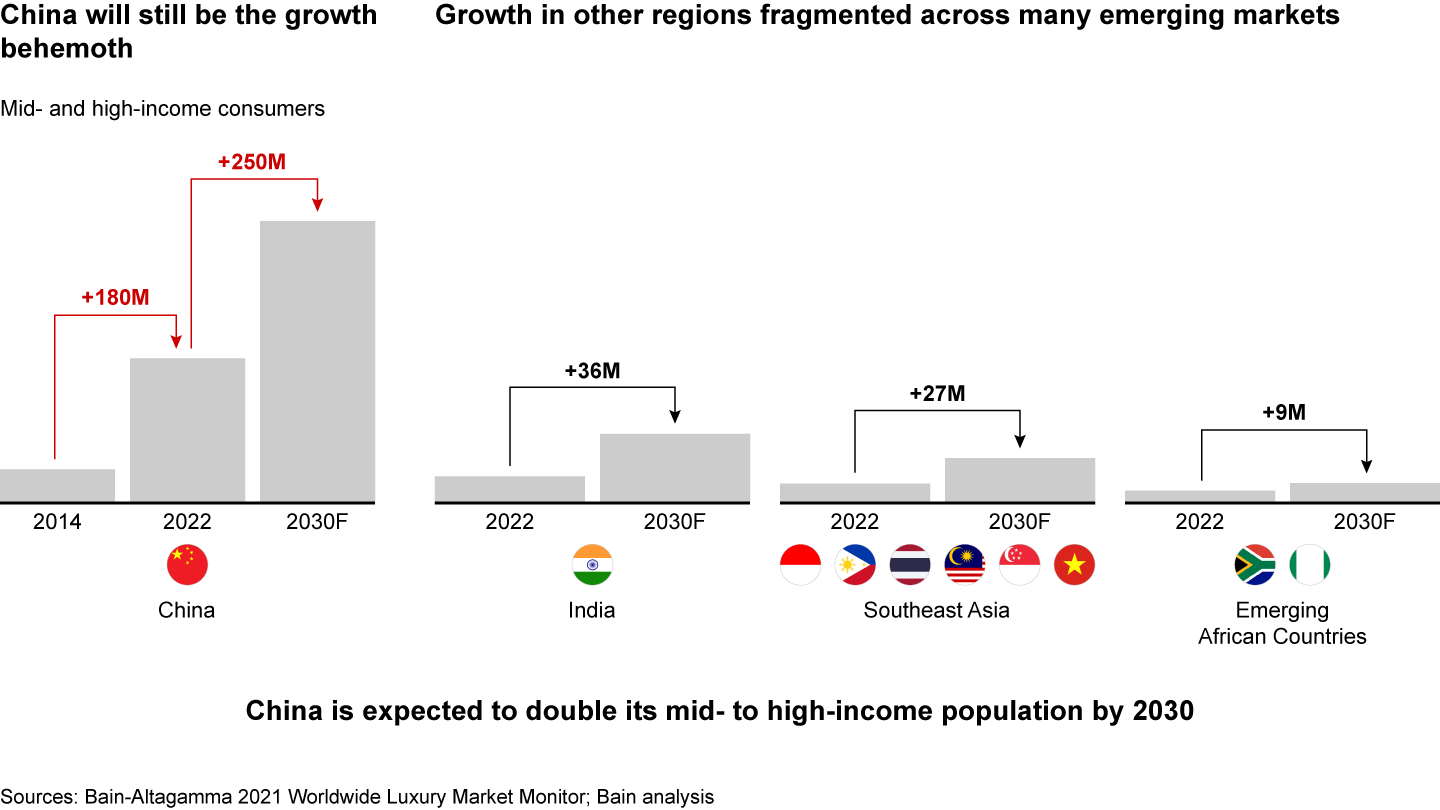
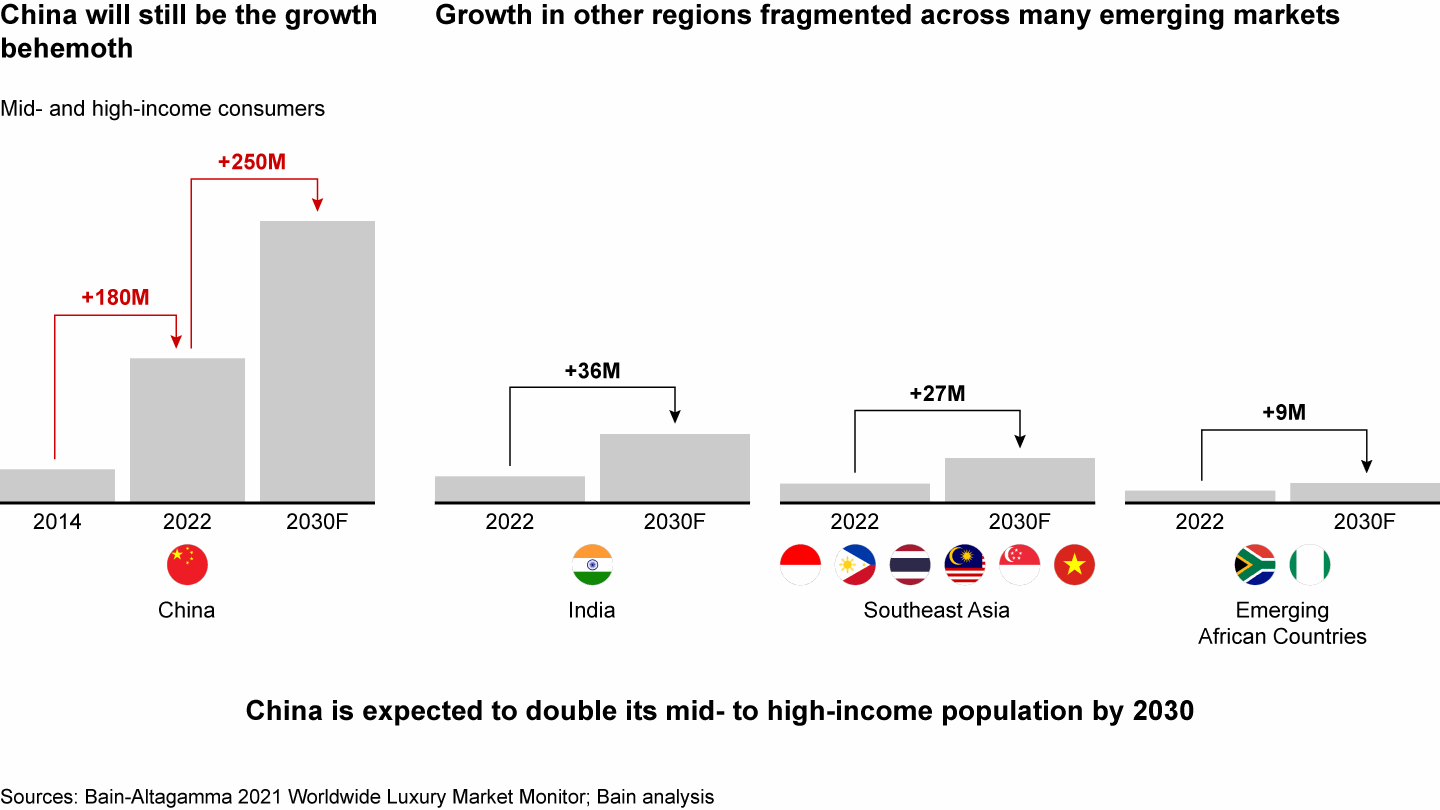
Luxury consumption will recover once Covid-19 subsides, mall traffic improves, and consumer sentiment rebounds. We expect to see 2021 sales levels sometime between the first and second half of 2023.
Hainan will rebound and become a key travel destination again, especially for the majority of Chinese travelers who are without passports. Demand for international travel will bounce back too, starting with Asia-Pacific destinations like Hong Kong, Macau, and Southeast Asia.
Chinese luxury consumers have distinct shopping behaviors and preferences. Differences between the Chinese and global luxury market will widen, especially around digitalization, the retail environment, cultural references, and relationships with brands. Brands that understand the nuances of the China luxury market will succeed over time.
While optimism abounds, there are also risks.
Most important, brands need to resolve pricing gaps between China and Europe before international travel resumes. At the moment, airlines have not fully resumed operations, but demand and traffic will pick up soon. Similar to pre-pandemic times, exchange rate fluctuations will influence where consumers travel.
In addition, some HNWIs are leaving China for Singapore, Hong Kong, and other destinations. Luxury brands may see a rebalancing between mainland China and the rest of the world.
Brands have invested heavily in customer experience and customer service in China over the past three years. Now, Chinese luxury customers have high expectations, regardless of where they live. Brands need to ensure their CRM tools work effectively across borders. To continue growing, luxury brands must deliver excellent experiences everywhere in the world.
The authors are grateful for all those who contributed to this report, especially Zoe Zou, a senior manager with Bain & Company’s Consumer Products and Retail practices in Greater China, and Zhewen Wei, an associate consultant in Bain’s Shanghai office.